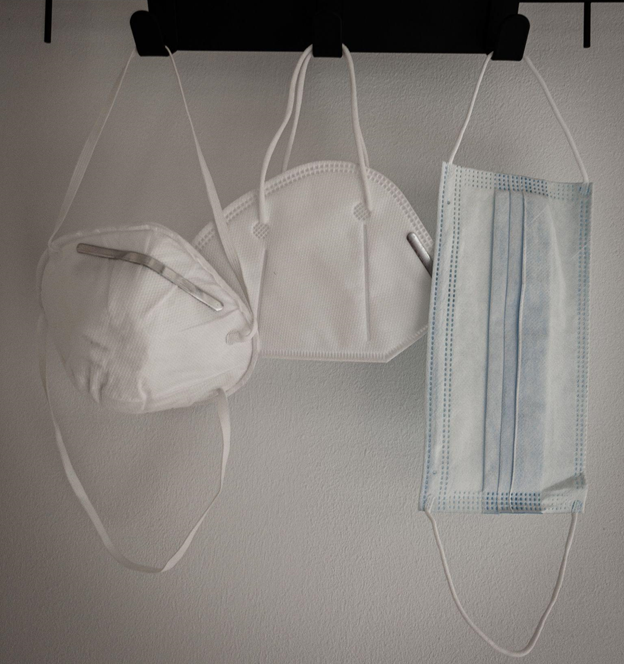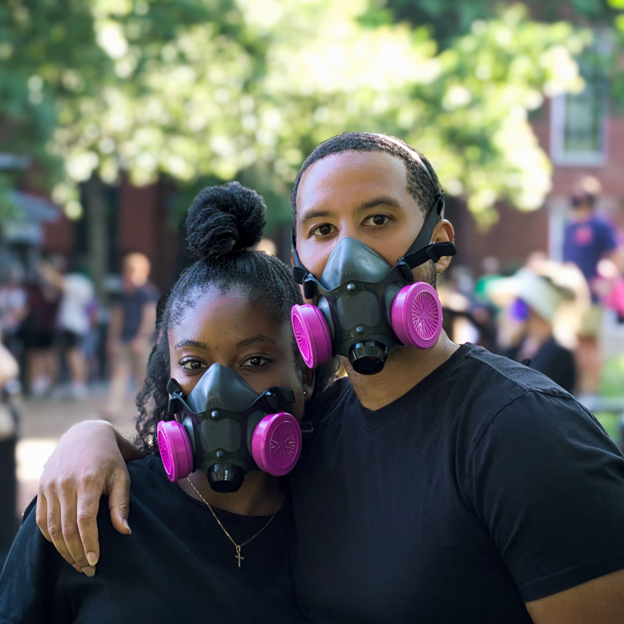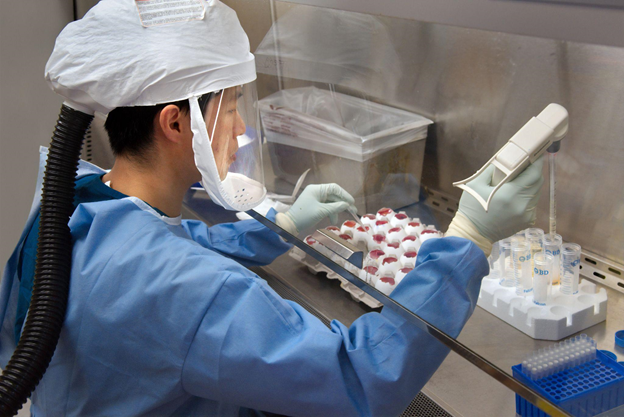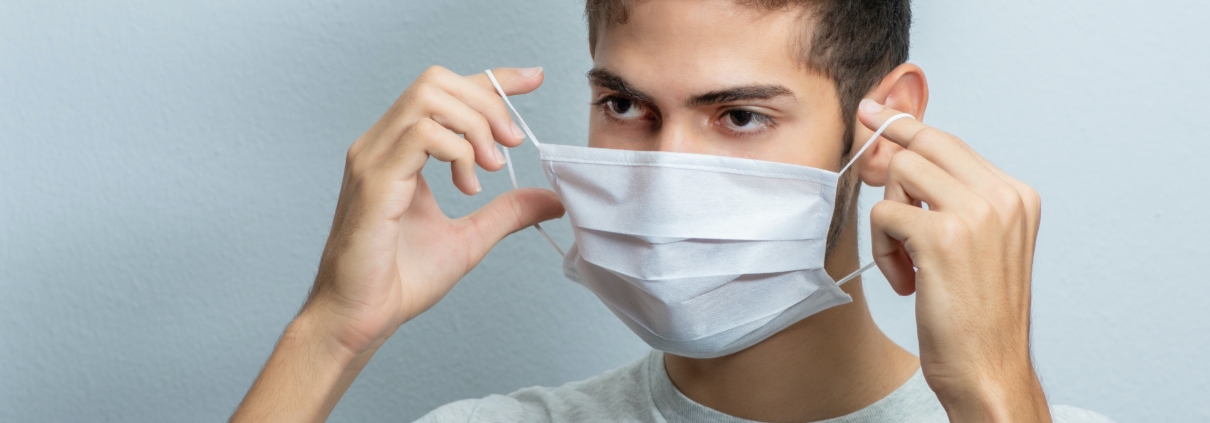Should I be using a mask for respirator to protect myself, If YES, what do I use?
What Mask or Respirator is Most Effective against COVID-19?
If you are looking for the best possible protection, it makes the most sense to use a respirator (N95 mask, ½ face mask or full-face mask) over a mask. Respirators provide the necessary air filtration required to stop viruses from reaching you. Assuming that a respirator is chosen based on what is needed to be protected against. For example “R” rated or a “P” rated makes are somewhat to strongly resistant to oil based particulates. They are typically used in applicable workplaces where oil-based participles are present.
These masks are not suitable to protect one against COVID-19 and even its variants like Omicron. The virus does not have oil-based particles, so an “N” rating (N95) is more than adequate. As for the percentage efficacy needed, you could use a respirator with “99” or “100” but then both price and longevity of the respirator become issues. The general rule is that respirators that filter out more particles, will also need to be replaced more often. Having to constantly replace something like an N100 could become costly and unworthwhile, as the slight increase in protection will be heavily outweighed by the cost to achieve it.
Most experts agree that an N95 mask is enough to provide ample protection against COVID-19. N95 respirators are only effective if the user has themselves mask fit tested. Below is more information related to mask fit testing, this certification will ensure there is a strong mask seal with the wearer’s face, so that you get the full 95% air filtration. When wearing a respirator, the user must also have no facial hair and they should not try to touch the respirator.
Should I be using a N95 Mask, a Surgical Mask or Respirator?
Whether or not you should use an N95 mask, or a respirator largely comes down to what sort of work you are doing or what environment you are heading into. A job that brings with it the risk of exposure to harmful chemicals will obviously require a respirator that provides a high degree of protection. On the other hand, under normal circumstances someone like a dental hygienist could make due with a surgical mask. Nowadays, with the surge in Omicron, many people are looking for more protection from airborne particles, and are opting to use barriers like N95 respirators. As a rule, the type of protection that you should choose should be determined by only what is necessary to protect against.
What is the Difference between a Mask and a Respirator?
Masks, specifically something like a surgical mask, will largely protect the user from droplets that could contain harmful substances. They will not really provide protection from airborne particles, however, meaning that for highly contagious airborne vectors, like Omicron, they are not the best choice. Respirators, on the other hand, specialize in air filtration. They are best for protecting against anything airborne. Depending on the respirator, they can also be an excellent choice for protection against droplets (something like a surgical N95 mask). N95 masks and reusable respirators achieve the best results when they are fitted to someone’s face. Both these masks and respirators protect you from droplets or airborne particles, and they also can protect those around you.

What are the Different Kinds of Masks?
There are many different types of masks out there, but there are two that many people are probably most familiar with. The first type is a simple cloth mask. These are made with either a single layer or multiple layers of a cloth-like material, the best using something that is not easily penetrable. The largest benefit that these provide is that they are usually reusable. Cloth masks were very popular at the beginning of the COVID-19 pandemic, and while they do provide a lot more protection than something like a bandana, they are simply not good against Omicron. For those that wish to continue using them, it is recommended that the mask have at least 3 layers of tightly woven material, or to use them with something like a surgical mask, this being the second mask that will be discussed. Surgical masks became a lot more popular a bit later in the pandemic, once mask shortages were less common. As mentioned previously, they have strong protection against droplets and are disposable. If worn in a close-fitting fashion, they might also provide a bit of protection against some particles. For those that like surgical masks, but are looking for slightly more protection, there are also higher-level versions. ASTM (ASTM International, formerly known as American Society for Testing and Materials) ranks surgical masks, for example, from Level 1 to Level 3, with Level 3 providing the best results.

What are the Different types of Respirators?
There are also many respirator types. Respirators can be either reusable or non-reusable. Non-reusable respirators are probably what most people will have seen before, as these usually include consumer N95 and KN95 respirators. NIOSH (National Institute for Occupational Safety and Health, the organization that oversees respirator usage for the US and Canada) provides alphanumeric classifications for its respirators, with each being given either the letter “N”, “R” or “P”, and the number “95”, “99” or “100”. A respirator with an “N” will be non-resistant to oil-based particles, one with an “R” will be resistant to them, and one with a “P” will be oil-proof. The numbers, on the other hand, stand for the percentage of particles that a respirator can filter out. It should be noted that for “100” the percentage is more like 99.97%. With this system in mind, an N95 respirator, for example, is non-resistant to oil-based particles and will filter out 95% of airborne particles. Some other countries will use different classification systems for their own respirators. You might see KN95 (China), FFP2 (Europe), P2 (Australia/New Zealand), Korea 1st class (Korea) or DS2 (Japan). All of these are comparable to N95 respirators, but may follow a different set of prerequisites for approval. Reusable respirators are typically either half-face or full-face. Half face respirators go over the lower portion of the face, covering the nose and mouth. Full-face respirators will cover a lot of the face, including the eyes. Most respirators are classified as negative-pressure, meaning that they require the user to pull air. Negative-pressure respirators will use filters or cartridges that include additional classifications by the manufacturer. 3m is one such company that provides classifications for their filters and cartridges. In addition to the typical NIOSH classification, they also have colour coded labels provided by NIOSH.
These coloured labels include:
- Magenta- protection against particulates
- Black- protection against organic vapours (found in paints and thinners)
- White- protection against acid gases (chlorine, hydrogen sulfide, sulfur dioxide, etc.)
- Yellow- protection against organic vapours and acid gases
- Green- protection against ammonia or methylamine
- Dark Green- protection against Formaldehyde and certain organic vapours
- Orange- protection against mercury vapour, chlorine and sulfur dioxide
Choosing a cartridge or filter is largely dependent on what you are protecting against. P100 filters are great protection against things like lead and asbestos, for example. Cartridges and filters should be replaced regularly, as they will not be as effective as time goes by. Positive-pressure respirators exist as well. These respirators will do the work of pulling air for the user from the surrounding environment (powered-air) or from an alternate source (supplied-air). Going a step further, there is also something called a Self-Contained Breathing Apparatus (SCBA). Technically a positive-pressure respirator, the user will carry a tank of clean air with them into a potentially dangerous environment.

Where can I get a Mask Fit Test?
If you are looking for a mask fit test for yourself or your office to certify the use of N95 mask or reusable respirator click here to get more information. Remember, respirators are only effective if you have been fitted to wear them. If not worn properly, then a respirator or N95 mask becomes no better than a mask. Contact Mask Fit Plus and they can assist you with the right mask or respirator for you.






Leave a Reply
Want to join the discussion?Feel free to contribute!